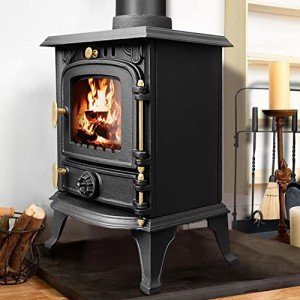The Versatility of Multi-Fuel Stoves for Small Spaces
In the ever-evolving landscape of home heating services, multi-fuel stoves have emerged as a popular choice, particularly for those living in compact home. These stoves, which can burn different types of fuel such as wood, coal, and pellets, provide substantial benefits in regards to performance, cost-effectiveness, and ecological friendliness. This post checks out the benefits of small multi-fuel stoves, their functionality, and some frequently asked questions to assist potential purchasers make informed choices.
The Benefits of Using a Multi-Fuel Stove
1. Versatility
One of the primary benefits of a multi-fuel stove is its flexibility. Property owners can select from different types of fuel based on accessibility, expense, and personal choice. The versatility of burning wood, coal, or pellets allows for more efficient and tailored heating.
2. Economical Heating
In numerous regions, fuel prices change significantly. A multi-fuel stove offers the alternative to switch in between different fuel sources as market value alter. For example, during the chillier months, coal may be more affordable than wood, enabling users to adjust their heating approach in response to price shifts.
3. Ecological Considerations
Burning fuels like wood and pellets is often thought about more sustainable compared to nonrenewable fuel sources. Multi-fuel stoves can use sustainable choices, minimizing carbon footprints. Additionally, numerous modern multi-fuel stoves are designed to burn fuel easily, leading to less pollutants and much better performance.
4. Space-Saving Design
Small multi-fuel stoves are developed for compact areas, making them ideal for houses, tiny homes, or small cabins. Many designs integrate visual design with practical effectiveness, offering warmth without overwhelming minimal space.
5. Reliable Heating Solutions
Multi-fuel stoves supply a reputable source of heating, especially during power interruptions. They allow property owners to preserve warmth even when electrical energy is unavailable, making them a practical option for areas prone to severe weather condition.
How Does a Multi-Fuel Stove Work?
Multi-fuel stoves operate through a combustion chamber where different fuels are burned.
- Air Circulation: These stoves are equipped with a system that makes sure ideal air blood circulation, which is critical for achieving high-efficiency levels and minimal emissions.
- Fuel Selector: Many models include a fuel selector that allows users to pick the kind of fuel being burned, improving performance.
- Heat Exchangers: Some stoves include heat exchangers to optimize heat output, permitting the stove to warm the room efficiently.
Table: Comparison of Common Multi-Fuel Stove Fuels
| Fuel Type | Schedule | Performance (%) | Environmental Impact | Cost (per load) |
|---|---|---|---|---|
| Wood | High | 70-85 | Moderate, renewable | ₤ 200 - ₤ 300 |
| Coal | Moderate | 65-80 | Greater emissions | ₤ 150 - ₤ 250 |
| Wood Pellets | Moderate | 85-90 | Low, eco-friendly | ₤ 250 - ₤ 400 |
| Biomass | Low | 75-90 | Low, eco-friendly | Varies extensively |
Choosing the Right Multi-Fuel Stove
When picking a small multi-fuel stove, a number of elements call for consideration:
Size and Space
- Procedure the available space to ensure compatibility.
- Make sure the stove fits the visual of the space.
Fuel Type
- Think about the primary fuel type offered in your region.
- Evaluate which fuel provides the best cost-efficiency for your needs.
Performance Rating
- Inspect the stove's efficiency rating (the greater, the better).
- Try to find stoves certified for minimal emissions.
Setup and Ventilation
- Evaluate installation requirements, consisting of venting needs.
- Consult experts when required to ensure safety and adherence to policies.
Brand Reputation
- Research study brands for reliability and customer care.
- Check out reviews and seek suggestions from current users.
FAQs About Multi-Fuel Stoves
1. Are multi-fuel stoves safe to use?
Yes, multi-fuel stoves are generally thought about safe when set up and preserved according to the producer's standards. Multi Fuel Burners Near Me and evaluations can help avoid concerns.
2. Can I utilize various fuels in the very same stove?
Yes, among the primary benefits of multi-fuel stoves is their ability to burn different fuels. Always refer to the maker's guidelines regarding suitable fuels.
3. How do I keep a multi-fuel stove?
Regular upkeep consists of cleaning up the ash pan, checking flues, and checking seals. Yearly professional assessments are recommended to guarantee safe operation.
4. What is the typical life expectancy of a multi-fuel stove?
With appropriate upkeep, a well-constructed multi-fuel stove can last anywhere from 15 to 25 years.
5. Do Multi Fuel Burners Near Me require an unique chimney for a multi-fuel stove?
Many multi-fuel stoves require a chimney that fulfills specific policies regarding flue size and product. Speak with an expert for recommendations tailored to your circumstance.
In conclusion, small multi-fuel stoves use impressive versatility, practical heating services, and energy performance, making them an excellent choice for small spaces. By comprehending the advantages and factors to consider associated with multi-fuel stoves, homeowners can take pleasure in a comfy, cost-efficient, and environmentally friendly heating choice. As his explanation continues to trend towards minimal area, these stoves represent a forward-thinking method to conventional heating methods.

